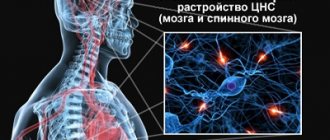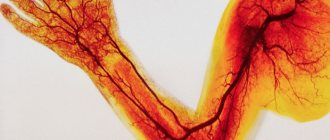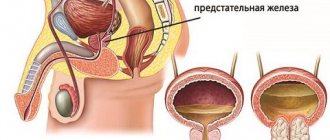People have known about the connection between nutrition and the development of various diseases for a long time. Therefore, with the help of a properly selected diet, you can not only lose weight, but also cure or at least stop the development of certain diseases. In particular, there is a diet that helps keep such a serious disease as multiple sclerosis under control.
To date, the causes of the development of multiple sclerosis have not been sufficiently studied. No one can say for sure what is the “trigger” that starts the disease mechanism. There are no medications that could radically cure this disease.
Ashton Embry's special diet for multiple sclerosis is not a generally accepted practice, but a private development of a Canadian scientist. There is no fundamental evidence of the effectiveness of this diet, however, positive reviews of the diet allow us to recommend it to patients.
While studying the disease, Embry discovered that certain foods pose a potential threat to the development and progression of autoimmune processes. Based on these data, scientists developed a diet from which certain types of foods were excluded that pose a potential danger of causing the immune system to destroy the body’s own tissues. At the same time, the diet is enriched with substances that have a beneficial effect on the nervous system and prevent the progression of the disease.
Menu for every day
According to the recommendations of Dr. Roy Swank, who since the late 50s for many decades has been involved in the selection of proper therapeutic nutrition for patients, it is necessary first of all to exclude allergenic foods from the diet.
The patient’s daily menu should include no more than 15 g of saturated fats, and 20-50 g of unsaturated fats. You can safely include dairy products with a fat content of 1% in the diet during the treatment period.
Embry diet breakfast example:
- vegetable soup with fish, meat (chicken, turkey);
- vegetables, baked, steamed, boiled with chicken breast or turkey;
- coffee drink or chicory.
- baked apple, pear with walnuts and honey;
- compote, fruit drink, jelly.
- vegetable salad with grated cheese, eggplant and zucchini;
- lean fish with lettuce and lemon juice;
- drink (tea, fruit drink, compote).
Regional variations in ketone action in the mouse cerebellum.
Despite these seemingly beneficial effects on mitochondrial bioenergetics, the effects of the ketogenic diet on mitochondria in the mouse brain are heterogeneous, and some results appear contradictory. Although a study in a mouse model of EAE demonstrated improved CA1 synaptic plasticity, in another study in rats, although KD prevented age-related morphological changes in the outer layer of the dentate gyrus of the cerebellum, it caused negative changes in the CA1 region []. In a study of rats fed a ketogenic diet for 8 weeks, antioxidant status was increased in the hippocampus but not in the cerebral cortex, and antioxidant activity was decreased in the cerebellum [].
Causes of sclerosis
The exact reasons for the development of the disease have not yet been identified; there are assumptions about this.
Genetic factors include a specific combination of genes that cause a disorder in the body's immune system.
There are also non-genetic factors. This may be stress, unfavorable living environment, poor nutrition, bacteriological or infectious diseases, smoking, frequent injuries, exposure to radiation, ultraviolet radiation.
The cause of the development of sclerosis may be a certain combination of external and internal factors that caused this disease.
It has been proven that this is not a hereditary disease; the risk of getting sick increases if there are such patients in the family. But the transmission rate from parents to children is only 2-10%.
Do you trust doctors and their prescriptions?
Yes
20.21%
No
11.4%
I trust, but I check all medications for reviews on the Internet from people who have already tried them and only then do I start taking them.
51.81%
Yes, but only to appointments and doctors from paid clinics.
16.58%
Votes: 193
There are risk factors that can trigger the development of multiple sclerosis:
- A certain area of residence or insufficient production of vitamin D. More often, sclerosis affects people whose place of residence is located far from the equator. These are northern areas with insufficient sunlight. In such people, vitamin D is not produced in sufficient quantities and can cause the development of sclerosis;
- Stress, severe neuropsychic tension;
- Excessive smoking;
- Low uric acid levels;
- Received hepatitis B vaccine;
- Diseases caused by viruses or bacteria.
Dr. Swonk's diet: recommendations for MS patients
The diagnosis of multiple sclerosis is not directly related to any strict dietary restrictions. As a rule, general nutritional recommendations for most patients suffering from this disease boil down to advice on eating regular healthy foods.
True, sometimes dietary errors can increase the risks associated with exacerbations. Side effects of certain medications and a sedentary lifestyle can lead to both excess weight and significant weight loss. Poor nutrition can worsen symptoms such as fatigue, weakness, and aggravate existing bladder problems.
Therefore, some nutritionists, in collaboration with neurologists, immunologists and allergists, sometimes still turn to the development of a rational diet for multiple sclerosis.
The main goal of such developments is to try to obtain a positive effect in terms of inhibiting the pathological processes occurring in multiple sclerosis by changing and adjusting nutrition.
By analyzing the characteristics of the diet in regions with different incidences of MS, analyzing the food preferences of people suffering from this disease, studying the mechanisms of the influence of food allergies and other factors on the course of the disease, some diets have been developed, which, according to their developers, take into account pathomorphological disorders and have some therapeutic effect in multiple sclerosis.
However, I note that there have been no large clinical studies confirming or refuting the effectiveness of diet therapy for MS. Nevertheless, there are a large number of positive reviews from patients who use certain diets and note the stabilization or improvement of their condition
Most of the diets developed for patients with multiple sclerosis are elimination diets.
Such diets involve excluding one or more food groups, or combinations thereof, from the diet. The most widely known diets are the Ashton Embry diet and the Dr. Roy Swank diet.
I have already written about the Embry diet. So today I want to talk a little about Dr. Swank's diet.
The Dr. Roy Swank Diet
In 1948, Dr. Roy Swank began studying the case histories of patients suffering from multiple sclerosis. Here are excerpts from the research results:
“In Norway, cases of MS are rare (approximately 1 in 10,000 people) in areas along the coast, where fish and seafood make up a large part of the diet.
However, in areas further inland from the coast, where agriculture was the leading industry, and even more so in the mountains, where the diet was based on meat, milk, eggs and cheese, multiple sclerosis was more common (about 9 per 10,000 people). )."
“In Switzerland, MS was more common in the German-speaking part of the country, where the diet is based on meat and milk, and much less common in the Italian-speaking part (where food preferences were given to fish, olive oil).”
Dr. Swank was also interested in data on “a decrease in disease activity in patients in occupied territories during World War II.”
Dr. Swank has developed a special diet that severely limits the consumption of animal fats for patients suffering from multiple sclerosis. Since 1950, 144 people have been under the doctor's supervision. The observation results were presented in 1970 and 1991.
In 1991, a report published the following data: 70 of 150 patients consumed an average of 17 grams of fat daily, 21% died. In the group where fat intake was 30 grams daily, the mortality rate was 75%. In the group whose fat intake was 42 grams daily, the mortality rate was 81%.
In the fall of 2000, Dr. Swank saw 14 patients who continued to follow his recommendations. Two of them were unable to walk, but other functions, including cognitive function, were normal. The remaining 12 patients were outpatients.
Two of them had difficulty walking but were able to care for themselves. The condition of the remaining ten patients physically, mentally, and neurologically corresponded to the age norm. Their ages ranged from 72 to 82 years.
Quick Guide to Dr. Swank's Diet
- Saturated fat intake should not exceed 15 g per day.
- Consumption of unsaturated fats should be reduced to 20-50 g per day.
- During the first year, the consumption of red meat (including pork) is completely limited.
- After the first year, you are allowed to eat 60 grams of red meat once a week.
- Dairy products must contain 1% fat or less unless otherwise noted.
- It is recommended to consume cod liver oil (1 teaspoon or capsule equivalent) and a multi-vitamin and mineral supplement daily.
- Consumption of wheat, gluten and dairy products is not limited.
However, you should avoid eating foods that cause allergic reactions in the patient.
Source: https://www.swankmsdiet.org/, https://en.wikipedia.org/wiki/Swank_diet, https://www.msrc.co.uk
Source: https://ProSkleroz.ru/alternativnaya-medicina/dieta-swonk
Diagnosis of the disease and observation
The diagnosis of multiple sclerosis is made after detecting 2 foci of sclerosis in the brain or spinal cord. The onset of symptoms should recur within 24 hours, and a stable deterioration of the condition should be observed for 6 months.
To identify foci of sclerosis, magnetic resonance imaging is prescribed. It allows you to see the location of the scars. During an exacerbation of symptoms, the doctor will not see the presence of foci of sclerosis; they take time to develop.
MRI is prescribed once a year, and if necessary, 2 times a year, to monitor the situation.
In addition to MRI, an immunoglobulin test may be prescribed. Their quantity is important in the cerebrospinal fluid. It is necessary to constantly monitor the state of the immune system.
Electromyography and the evoked potential method are no less accurate than MRI examinations. These studies help to accurately determine the location of scar formation and the extent of the lesion.
Diet for multiple sclerosis is an important part of the life of a person suffering from this chronic disease.
In each patient it manifests itself in different symptoms, but there is a general pattern of exacerbation.
It is recommended to stop abusing bad habits such as smoking and alcohol, especially for people over 40 years of age with this diagnosis.
The dietary recommendations given below are physiologically adequate and well founded. Diet for multiple sclerosis plays an important role, and perhaps one of the main ones.
Effect of the ketogenic diet on ATP levels.
The ketogenic diet increases ATP production. Administration of beta-hydroxybutyrate immediately after bilateral common carotid artery ligation in a mouse model of global cerebral ischemia preserves ATP levels []. Feeding mice a ketogenic diet for three weeks resulted in increased ATP levels and the ATP/ADP ratio in the brain [].
The improvement in ATP levels can be partially attributed to the ketogenic diet's ability to reduce oxidative stress. Although diet can reduce the formation of reactive oxygen species by increasing UCP activity, any decrease in oxidative phosphorylation caused by UCP activity is outweighed by the increase in respiration and associated ATP production that occurs as a result of the decrease in oxidative stress.
The ketogenic diet also appears to preserve ATP levels in cases of mitochondrial respiratory chain dysfunction, possibly by replenishing TCA cycle intermediates [ ]. Beta-hydroxybutyrate attenuates the reduction in ATP production caused by a defect in complex I of the electron transport chain. It is thought to increase levels of the TCA succinate intermediate, which bypasses complex I upon entry into the TCA cycle [,]. This has significant implications for multiple sclerosis, as defects in complex I in the electron transport chain have been observed in white matter lesions as well as in “normal” areas of the motor cortex [ , ]. Ketones can also preserve ATP levels if complex II of the electron transport chain is inhibited, but this effect shows some regional specificity [].
Food for multiple sclerosis. Reducing the diet
In order to prevent weight gain and improve physical activity, it is necessary to reduce the amount of simple sugars . In particular, a significant reduction in the consumption of simple sugars is recommended for patients with frequent exacerbations who have received a course of glucocorticoid therapy.
Simple sugars belong to the class of carbohydrates. We are talking about our favorite carbonated drinks, desserts, sweets in the form of candies and cakes. As for juices, nutritionists recommend eating fruit instead of a drink.
Food for multiple sclerosis. We increase the diet
Consume foods containing high amounts of magnesium salts - nuts, dried apricots, bran.
Enrich your diet with vitamin C , as well as B vitamins . You can achieve enrichment by consuming fruits (rose hips, black currants, citrus fruits) and vegetables (salads from carrots, beets, side dishes from zucchini, cauliflower, etc.)
The dietary recommendations given below are physiologically adequate and well founded. Diet for multiple sclerosis plays an important role, and perhaps one of the main ones.
Symptoms of sclerosis:
- 1 Motor weakness and loss of coordination;
- 2 Sensory disturbances – numbness or tingling in the hands;
- 3 Visual impairment;
- 4 Fatigue;
- 5 Sexual dysfunction;
- 6 Bladder and bowel dysfunction;
- 7 Speech disorders.
The appearance of atherosclerosis is caused by:
The exact causes of multiple sclerosis have not yet been identified, but scientists believe that these are genetic and external (environmental) factors, as well as past viral diseases and malfunctions of the immune system, as a result of which it attacks the cells of its body.
Causes of sclerosis
- 1 Chronic inflammatory processes (tuberculosis, syphilis);
- 2 Hormonal and endocrine disruptions;
- 3 Metabolic disorders;
The exact causes of multiple sclerosis have not yet been identified, but scientists believe that these are genetic and external (environmental) factors, as well as past viral diseases and malfunctions of the immune system, as a result of which it attacks the cells of its body.
Fresh fruits and vegetables
These foods contain antioxidants that help reduce inflammation in the body. According to the Harvard Women's Health Service, your diet should include: tomatoes, leafy greens (spinach, kale) and fruits (strawberries, blueberries, cherries, oranges).
There is some evidence that these foods are useful for protecting against MS. According to studies published in the journal Neurology in January 2018, a diet rich in vegetables and fruits reduces symptoms of the disease in such patients. This includes less fatigue, pain, cognitive impairment and depression.
Dietary recommendations
Regardless of the specific diet, doctors provide general nutritional recommendations for people suffering from multiple sclerosis. They include the following items:
- The amount of calories consumed should correspond to energy expenditure. This helps prevent the development of obesity, which worsens the prognosis for the underlying pathology.
- The amount of salt should be limited. Scientific research shows that high sodium chloride intake is associated with additional lymphocyte activation. These cells are the main damaging agent to the myelin of nerve fibers.
- Protein consumption is limited to 40-60 grams. Protein molecules entering the digestive tract can be a source of sensitization to the immune system. An increase in its sensitivity to proteins explains the increase in the inflammatory response in the structures of the central nervous system.
- Meat should not be included in the diet more than 2 times a week. This is related to the previous point.
- Meals should be fractional - up to 6 times a day. Small portions improve digestion processes and ensure complete breakdown and absorption of nutrients.
- Patients are recommended to drink 2 liters of water per day, in addition to tea, coffee and natural juices.
- You should completely avoid processed foods and fast food. They contain high amounts of saturated fat and have low nutritional value.
Following these recommendations for changing your diet ensures a general improvement in the condition and functioning of the gastrointestinal tract. Foods rich in vitamins and minerals with low protein content reduce the rate of progression of multiple sclerosis.
Speaking about what kind of diet is needed for multiple sclerosis, doctors note that it depends on the individual patient. There are several types of nutritional therapy: the ketogenic diet, the paleo diet, the Swank diet and the Ashton Embry diet, each of which can improve the prognosis for the patient. As a rule, doctors, together with nutritionists, try different nutritional options, choosing the most optimal one for the patient.
Multiple sclerosis is a chronic progressive disease characterized by the gradual destruction of the myelin sheaths of nerve fibers. This leads to the appearance of various neurological symptoms. Existing treatment methods are ineffective, since they are aimed primarily at suppressing the immune response, and not at the cause of the pathology itself. Modern scientific research shows that a therapeutic diet is of great importance in the treatment of multiple sclerosis. This is due to the fact that intestinal microbiota and protein products influence the state of the nervous and immune systems.
Ketogenic diet for the neurodegenerative component of progressive MS.
The ketogenic diet has traditionally been used to treat intractable epilepsy, but it is becoming increasingly clear that its benefits may apply to a wider range of neurological diseases. Although research into its use outside of epilepsy is still in its infancy, the results are promising and have great potential for treating neurodegeneration, especially in relation to mitochondrial function.
The ketogenic diet has a beneficial effect on mitochondrial function. It reduces the level of reactive oxygen species and increases the availability of ATP. Diet may provide neuroprotection and reduce inflammation. Ketones produced during a ketogenic diet can be used as an alternative fuel source for impaired glucose metabolism.
Diet changes and treatment for multiple sclerosis
Diet is an important part of a person’s life and has a significant impact on his health. Scientific research shows that various diets have a positive effect on multiple sclerosis, slowing the progression of the disease. In this regard, nutritional correction is recommended for all patients.
Myelin is a protein-lipid complex that covers nerve fibers and ensures rapid transmission of impulses. In terms of the quantitative content of chemicals, myelin consists of 75% fat and 25% protein. In this regard, its condition, including multiple sclerosis, is influenced by a large number of nutrients supplied with food:
- Omega-3 polyunsaturated fatty acids that form the basis of the lipid part of myelin. In addition, the permeability of the membranes of neurons and other cells of the body is determined.
- Phospholipids are an integral part for the formation of nerve cell membranes and the myelin sheath. Scientists believe that phospholipids have antioxidant properties, blocking the formation of free radicals that can damage myelin.
- Vitamin A, which regulates intracellular metabolism processes.
- Vitamin E is a powerful antioxidant that blocks oxidative stress and reduces the severity of inflammatory changes.
- Vitamin D - affects the functioning of immune cells. It reduces their activity, thereby preventing the development and progression of autoimmune reactions in multiple sclerosis.
- Potassium, magnesium, selenium and other trace elements. Participate in the processes of cell growth and division, prevent oxidative stress, and promote the restoration of the myelin sheath.
The diet of patients with multiple sclerosis should include foods containing these substances. In this case, diet plays an additional therapeutic role, reducing the rate of progression of the pathology.
- any sweet foods and drinks: sparkling water, confectionery, ice cream, juices, etc.;
- wheat, rice, pasta and other grain products;
- fresh and frozen fruits;
- root vegetables and legumes: potatoes, carrots, beans, peas, lentils, chickpeas;
- sauces and seasonings, as they contain large amounts of sugar;
- vegetable oils, including mayonnaise;
- alcohol, which negatively affects the processes of absorption and breakdown of fats.
Turmeric
The spice has powerful anti-inflammatory properties. Turmeric can be used either fresh or dried and powdered.
On June 18, Maxim Galkin turns 44 years old
Daenerys in melodrama: the best films of actors from “Game of Thrones”
Solar eclipse and summer solstice on the same day: what’s special about June 21
Curcumin, which is part of the spice, has great benefits for the human body, therefore it is especially important for MS.
Basic principles of the Embry diet
At the moment, there is no such dietary nutrition system for multiple sclerosis, the effectiveness of which has been proven by scientific research. At the same time, doctors do not stop trying to develop a special diet that could help people with this pathology. Thus, the most famous nutritional system is the Embry diet.
The diet for Embry's multiple sclerosis involves limiting the consumption of foods containing protein, which at the molecular level is similar to the protein structures of the central nervous system. These are, first of all, dairy and gluten-containing products, as well as legumes. According to the author of the diet, Ashton Embry, such food can cause autoimmune reactions.
Let's sum it up
Nutrition can be considered as an alternative way to treat chronic diseases. Unfortunately, at the moment there is no scientific evidence of the effectiveness of this or that nutritional system for multiple sclerosis.
At the same time, the above diet helps reduce blood cholesterol and increase the consumption of healthy unsaturated fatty acids. And we can definitely say that a balanced diet helps to maintain health and more effectively fight the disease.
Recipes for healthy dishes for multiple sclerosis
Knowing the principles of the Embry diet, it is not difficult to create an appropriate menu. You can diversify your diet with a variety of dishes that will be both healthy and tasty. Moreover, the recipes for diet dishes for multiple sclerosis are not at all complicated and their preparation does not take much time.
- Vegetable soup with chicken Place chicken cut into pieces, chopped onion, and ground pepper into a saucepan with water. Place the dishes on the stove. When the water boils, turn the heat down and simmer the soup until the meat is tender. Now add six chopped fresh tomatoes, two chopped carrots and zucchini to the pan. Bring the soup to a boil. After this, reduce the heat and cook for another twenty minutes.
- Halibut with tomatoes This interesting fish dish is very tasty and easy to prepare. Finely chop the onion and fry it until half cooked. Add chopped tomatoes and tomato juice to the onion, a little salt and pepper. Simmer on fire for five minutes. Now take the halibut, cut it into pieces and remove the bones. Place the resulting pieces in a baking tray, and pour the prepared tomato marinade over the fish. Place in the oven for twenty minutes.
- Peach dessert The diet menu for multiple sclerosis can be varied. For example, you can prepare a delicious dessert. Take three fresh peaches and chop them finely. Add 120 grams of chopped almonds, two tablespoons of chopped dates, half a teaspoon of vanilla extract and a pinch of cinnamon to the fruit. All ingredients must be mixed - and the dessert is ready! This is an excellent alternative to the usual but unhealthy cakes and cookies made from wheat flour.
Prohibited Products
As mentioned above, a diet for patients with multiple sclerosis involves a complete rejection of foods whose molecular structure imitates the protein of nervous tissue. According to this statement, the following are prohibited:
Products to limit
Nutrition for multiple sclerosis involves limiting the diet of red meat. It is allowed to use it once a week. This principle is due to the fact that red meat contains large quantities of saturated fats, which increase blood cholesterol levels. In turn, cholesterol is deposited on the walls of blood vessels (including in the vessels of the brain), which interferes with normal blood flow.
Effect of a ketogenic diet on oxidative stress.
The ketogenic diet has been shown to reduce the formation of reactive oxygen species through its effect on protein uncoupling. It also increases levels of antioxidant agents including catalase and glutathione through its inhibitory effect on histone deacetylases and activation of the Nrf2 pathway.
9.1. Ketogenic diet increases mitochondrial uncoupling protein levels
The process of oxidative phosphorylation produces reactive oxygen species. The degree of generation of reactive oxygen species strongly correlates with the potential difference across the inner mitochondrial membrane. Uncoupled proteins (UCPs) can reduce this potential difference by allowing protons to enter the mitochondrial matrix. Although this “mild” uncoupling may cause a slight decrease in ATP generated from oxidative phosphorylation, its overall net effect is to increase respiration and ATP levels by reducing the formation of reactive oxygen species and protecting against apoptotic events [ ]. The ketogenic diet appears to promote UCP activity, particularly the activity of UCP2, UCP4 and UCP5, with a corresponding reduction in reactive oxygen species [ ].
9.2. Ketones inhibit histone deacetylases
Ketone beta-hydroxybutyrate has a direct dose-dependent inhibitory effect on class I histone deacetylases (HDACs), including HDAC1, HDAC3 and HDAC4. The ketone acetoacetate has also been shown to inhibit class I and class IIa HDACs. Inhibition of HDACs by beta-hydroxybutyrate promotes acetylation of histone H3 lysine 9 and histone H3 lysine 14 and increases transcription of FOXO3A-regulated genes. These include genes that cause the expression of the antioxidant enzymes mitochondrial superoxide dismutase and catalase [ ].
9.3. Ketogenic diet leads to activation of Nrf2 pathway
The ketogenic diet increases glutathione levels in the hippocampus of rats [ ]. This is thought to occur through the Nrf2 (nuclear factor erythroid 2-related factor 2) pathway. When a ketogenic diet is first started, there is a temporary increase in oxidative stress. This may activate Nrf2, as increased expression of Nrf2 is observed one week after a transient increase in oxidative stress. Three weeks after starting the diet, oxidative stress decreases to below baseline levels, and Nrf2 levels remain elevated [ ].
Recommended Foods
With multiple sclerosis, you can eat different foods: seafood, vegetables, fruits rich in vitamins and antioxidants, which allows you to diversify your diet. To prepare healthy meals for patients with multiple sclerosis, they use foods that supply the body with essential nutrients, which helps strengthen the overall immune system. Among them:
- Vegetables fruits.
- Soy-based products (tofu cheese, soy meat, miso).
- Fish, seafood (herring, mackerel, salmon, pink salmon).
- Nuts, seeds.
- Vegetable oils (olive, flaxseed, sunflower, sesame, peanut, rapeseed).
The diet, designed for patients with multiple sclerosis, includes dishes such as pumpkin pancakes and Greek pasta. To prepare pumpkin pancakes, take grated pumpkin (0.5 cup) and vegetable oil (1 tablespoon), ground almonds (100 g) and honey (1 tablespoon). You will also need eggs (2 pcs.) and crushed oatmeal (25 g), milk (50 ml), lemon juice (1 teaspoon), baking soda (quarter teaspoon). You can add spices to taste - cinnamon, vanilla, nutmeg. Mix the ingredients until smooth. Bake the pancakes in a preheated, oiled frying pan.
To prepare Greek pasta, take tomatoes (400 g), spinach (300 g), olives (150 g), garlic (2 cloves), gluten-free pasta (250 g), soft cheese (50 g). Cook the pasta according to the instructions on the package. Simmer chopped vegetables and herbs for 10 minutes over low heat. Place the cooked pasta in the sauce, simmer for 2 minutes, serve with sliced cheese. The menu for multiple sclerosis includes recipes:
- Seafood salads (shrimp, tuna).
- Vegetable soups, possible with lean chicken without skin.
- Porridges cooked in water (buckwheat, rice, corn).
- Steamed fish.
- Lean chicken meat, steamed.
- Vegetable pancakes, casseroles.
- Stewed or baked vegetables.
Freshly squeezed vegetable and fruit juices, smoothies, herbal and green tea are useful. You can eat raw vegetables, fruits, and berries in any quantity. To prepare a delicious dessert - banana-oat muffins, take oat flour (0.5 cup) and oat flakes (0.5 cup), baking soda (0.5 teaspoon), bananas (2 pcs.). You will also need an egg and honey (2 tablespoons), milk (1 glass) and cinnamon (1 teaspoon). Mix egg, honey, milk, mashed bananas. Add flour, soda, cinnamon, oatmeal, knead the dough. Place the dough into molds and bake in the oven for 25 minutes at 200°C.
Human studies
There is currently little human research on the use of ketones/ketogenic diets for neurodegenerative disorders. There is one recent randomized, double-blind, placebo-controlled trial examining the effects of ketones on the neurodegenerative phenotype in 152 participants with mild to moderate Alzheimer's disease, which found improved cognitive performance with oral administration of the ketogenic compound AC-1202. used for 90 days. This improvement was greater in patients lacking the APOE4 polymorphism [ ]. Small studies in other neurodegenerative conditions have yielded similar positive results [ ].
There is evidence of glucose transporter dysfunction in axons susceptible to chronic damage in MS, and studies of subjects with inherited glucose transporter dysfunction following a ketogenic diet have yielded positive results [ , , ].
What foods should you exclude?
It is necessary to avoid foods that can trigger autoimmune mechanisms and increase inflammatory processes. Among them:
- Grape seed extract (up to 300 mg). If hypersensitivity to grapes occurs, it can be replaced with blueberries.
- Salmon oil (4 g).
- Cod liver oil (2 g).
- Vitamins B12 (100 mcg).
- Vitamin C (up to 3 g).
- Vitamin E
- Calcium (up to 1500 mg).
- Magnesium (up to 500 mg).
- Zinc (25 mg).
- Selenium (50 mcg).
- Primrose oil (up to 5 g).
- Flaxseed oil (10 g) in the absence of hypersensitivity.
Let's work together to make the unique material even better, and after reading it, we ask you to repost it on a social network convenient for you. net.
Walnuts
Nuts are an excellent source of omega-3 and other healthy unsaturated fats. They also contain antioxidants, fiber, and magnesium, which also play an important role in reducing inflammation.
Eating walnuts has been confirmed to reduce the levels of two blood markers (prostaglandin E and 11-dehydrothromboxane B2).
According to other data published in May 2013 in the Journal of Nutritional Biochemistry, a diet rich in these fruits has been shown to reduce brain inflammation in older rats. However, beneficial effects were found in the area that is responsible for memory and cognition.











